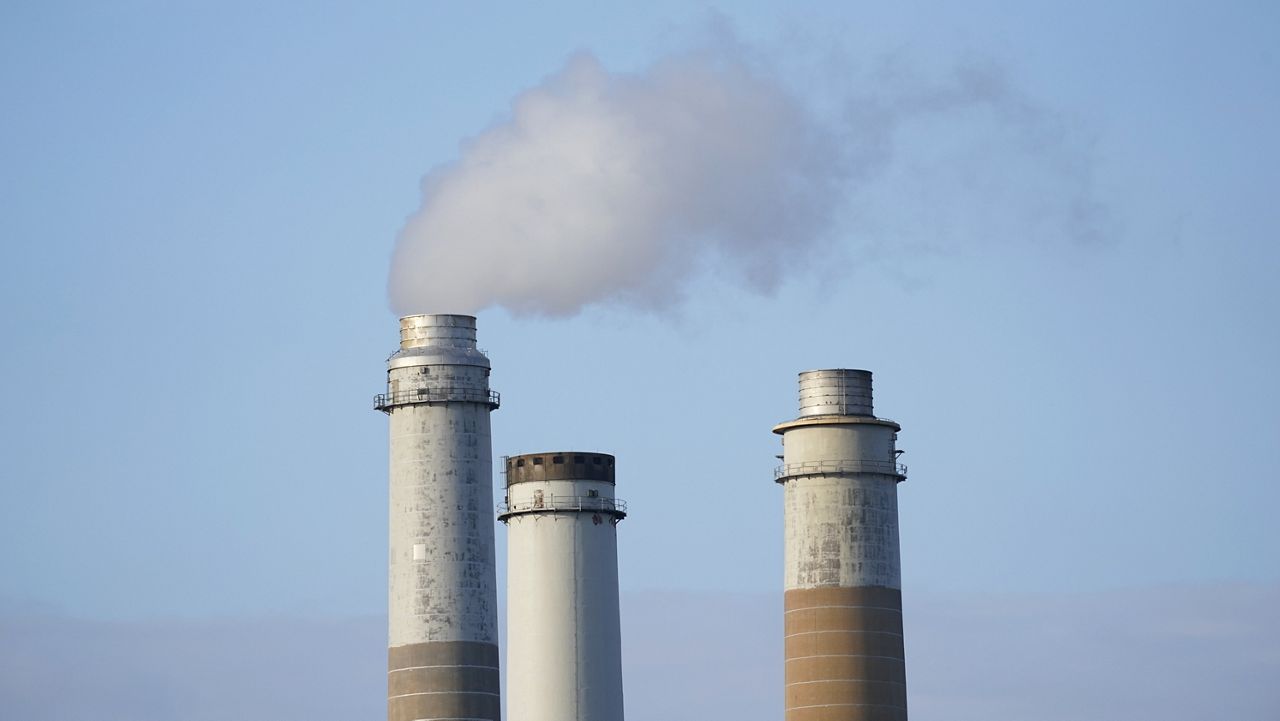The world is on track to limit global warming to 3 degrees Celsius (5.4 degrees Fahrenheit) above pre-industrial levels by the end of the century, which would nearly double the goal set in the 2015 Paris Agreement, according to a new United Nations report.
What You Need To Know
- The world is on track to limit global warming to 3 degrees Celsius (5.4 degrees Fahrenheit) above pre-industrial levels by the end of the century, which would nearly double the goal set in the 2015 Paris Agreement, according to a new United Nations report
- Capping global warming at 1.5 degrees Celsius would require cutting greenhouse gas emissions by 42% by 2030, the report said; a 28% cut in emissions would put the world on a pathway to limiting warming to 2 degrees
- The annual Emissions Gap Report measures the disparity between countries’ pledged greenhouse gas emission cuts and the reductions needed to meet the targets set in the Paris accords
- The likelihood of limiting warming to 1.5 degrees stands at just 14%, according to the report.
According to the report by the U.N. Environment Programme, if current emissions mitigation policies are continued, the planet will warm by an estimated 2.5 to 2.9 degrees Celsius.
Capping global warming at 1.5 degrees Celsius would require cutting greenhouse gas emissions by 42% by 2030, the report said. A 28% cut in emissions would put the world on a pathway to limiting warming to 2 degrees.
The annual Emissions Gap Report measures the disparity between countries’ pledged greenhouse gas emission cuts and the reductions needed to meet the targets set in the Paris accords.
The report was released Monday to help inform negotiators at the COP28 climate summit that begins later this month in Dubai. The projections in this year's report are slightly higher than last year's.
“We know it is still possible to make the 1.5 degree limit a reality,” U.N. Secretary-General Antònio Guterres said in a statement. “It requires tearing out the poisoned root of the climate crisis: fossil fuels. And it demands a just, equitable renewables transition.”
However, the likelihood of limiting warming to 1.5 degrees stands at just 14%, according to the report.
The 1.5-degree mark alone would lead to higher sea level that makes some coastal areas uninhabitable, more frequent and more intense tropical storms, heat that is more extreme, more droughts that hurt food supplies, and more wildfires that threaten homes and businesses, environmentalists say.
Countries must set more ambitious emissions goals to have any shot at staying below 1.5 degrees, the Environment Programme said.
“There is no person or economy left on the planet untouched by climate change, so we need to stop setting unwanted records on greenhouse gas emissions, global temperature highs and extreme weather,” said Inger Andersen, the program’s executive director. “We must instead lift the needle out of the same old groove of insufficient ambition and not enough action, and start setting other records: on cutting emissions, on green and just transitions and on climate finance.”
The effects of climate change are already being felt, the report said. As of Oct. 2, the world had recorded 86 days this year when global temperatures exceeded 1.5 degrees Celsius above pre-industrial levels. And September was the hottest month on record, with average temperatures hitting 1.8 degrees above pre-industrial levels.
Meanwhile, there was a new record set in 2022 for global greenhouse gas emissions, up 1.2 percent from the previous year, the report found. And none of the G20 countries are reducing emissions at a pace consistent with their net-zero targets, according to the report.
There, however, have been some positive signs since the Paris Agreement was signed. Greenhouse gas emissions had been projected to increase by 16% by 2030. Now the increase is forecast to be 3%.
And as of September, nine additional countries had submitted climate action plans, bringing the number to 149. If all those plans are fully implemented, they would likely reduce greenhouse gases in 2030 by 9% compared to 2022, the report said.



